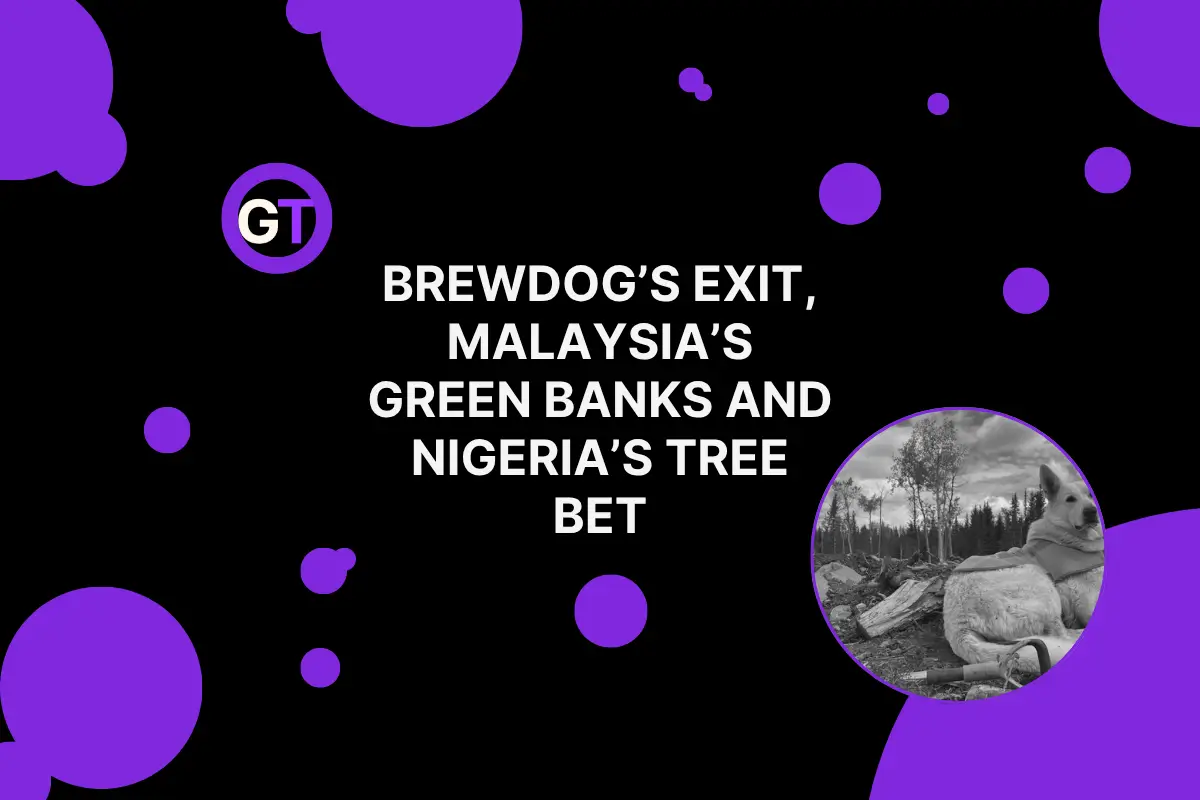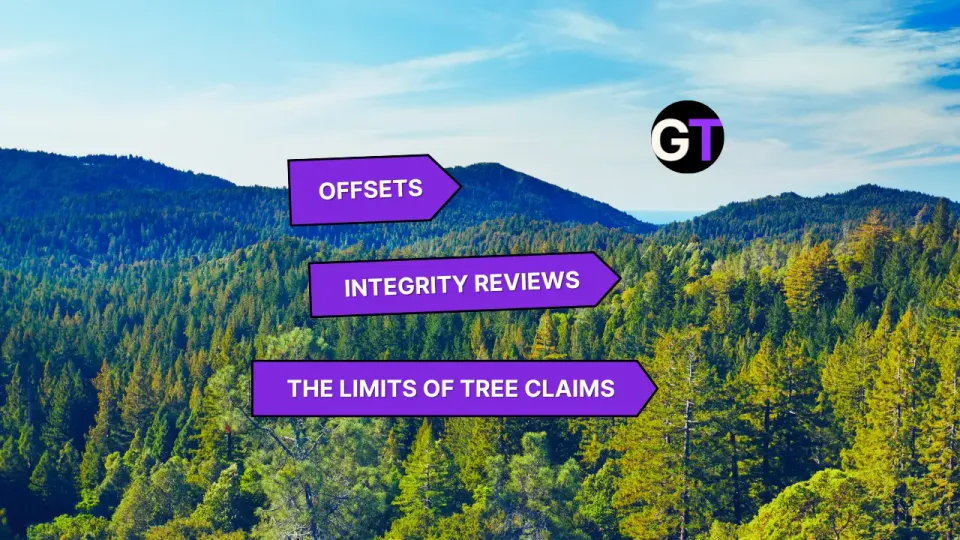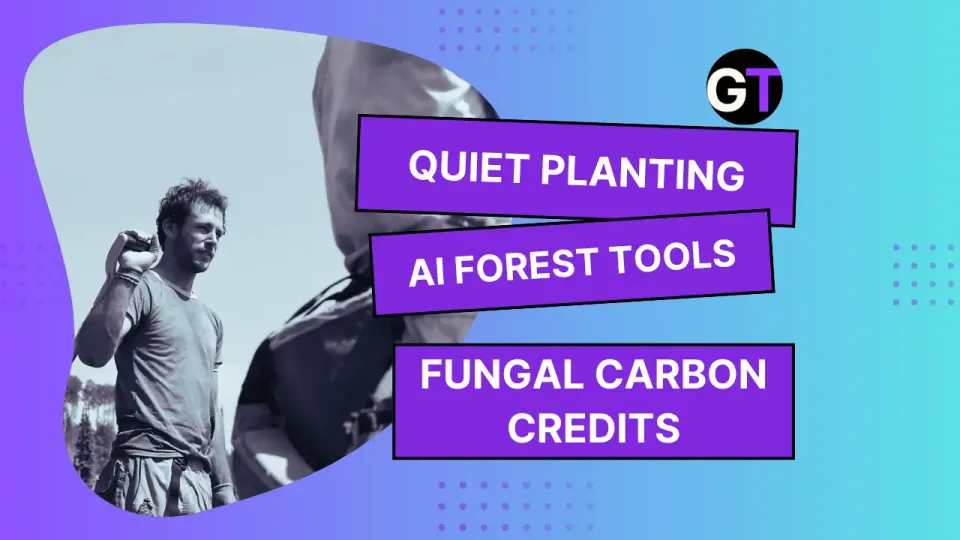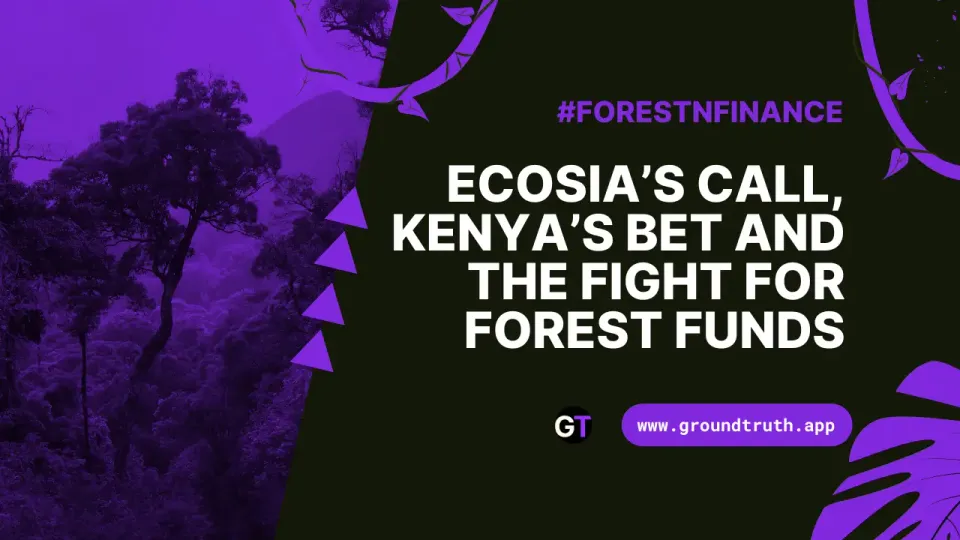BrewDog’s Exit, Malaysia’s Green Banks and Nigeria’s Tree Bet
Restoration meets returns: from Nigeria’s forest economy to EU carbon math and Canada’s grants, this week in global forest finance.

Brewing Change: Kinrara Forest Moves to New Hands
Earlier this year, BrewDog pledged £2.7 million to replant 250,000 trees on its 10,000-acre Kinrara Estate in the Scottish Highlands. But after reports of high sapling mortality and mounting skepticism from some locals, the brewery has stepped away from the reforestation effort, selling the property—peatlands, moors, and all—to Oxygen Conservation. The company claims to have restored 745 hectares of peatland and planted 375 hectares of woodland. Oxygen’s acquisition now pushes its UK conservation holdings past 50,000 acres. What’s less clear is whether the new stewards can overcome the project’s early setbacks—and whether Kinrara can still live up to its original climate ambitions.
💬 With reports of 50% sapling mortality at Kinrara, how do survival rates here compare to those in commercial reforestation—and what can successors learn from industry best practices?
👉👉 Read more in edie
Malaysia’s Banks Get in on the Climate Game
With COP30 around the corner, Malaysia’s BPMB Group is rolling deep with ALAM to green the economy from the grassroots up. The group’s trio of banks—BPMB, EXIM, and SME Bank—are backing everything from reforestation to green trade financing, with billions already flowing. From launching Malaysia’s first Sustainability Sukuk to funding crowdfunding platform Sinar ALAM, they’re betting big on blending institutional muscle with community action. The vibe? Finance with a conscience—and a carbon budget.
💬 Can banking power really drive grassroots environmental change—or will local communities be left navigating top-down green finance?
👉👉 Read more in Business Today
$5.5M Boost for the Bruce
The Bruce Trail Conservancy just scored a $5.5 million grant from the Weston Family Foundation—fuel for securing 14 km of Canada’s iconic footpath and protecting 500 hectares of Niagara Escarpment wilderness. Expect new meadows, reforestation, and community outreach as part of a 3-year plan to blend conservation with public engagement. With over 1,300 km of trails within reach of 8 million Ontarians, the BTC isn’t just preserving nature—it’s connecting people to it, one step at a time.
💬 Can major philanthropic grants by corporate entities reshape the future of conservation and public access to nature in Canada?
👉👉 Read more here
Nigeria’s Green Dividend: Can Trees Rescue an Economy?
Nigeria is betting on reforestation not just as climate action—but as economic stimulus. Faced with slowing growth, fiscal strain, and rising climate shocks, the government and some in the private sector are looking to tree restoration as a way to stabilize soils, generate jobs, and unlock carbon revenue. Thoughtfully designed projects—from natural regrowth to agroforestry—have already shown promise: improved food security, dietary diversity, and measurable gains in household income. One study suggests that restored tree cover could boost per capita incomes by up to ₦800,000 annually. Beyond carbon sequestration, forests in Nigeria support non-timber livelihoods, reduce health risks, and help rural communities adapt to floods and droughts.
Yet success is far from guaranteed. High tree mortality, murky land rights, and short-term funding cycles continue to limit progress. Initiatives like Seplat’s Tree4Life project in Edo State offer proof of concept—but scaling requires stronger land tenure systems, better monitoring, and financing that lasts beyond planting day.
💬 If reforestation is promoted as Nigeria’s economic breakthrough, how do we ensure that the ‘dividend’ is measurable and lasting—especially given challenges like low survival rates and unclear land rights?
👉👉 Read more in BusinessDay
Michigan Storm Recovery: $2M for Trees, $14M for Hope?
Six months after a brutal ice storm tore through Northern Michigan, lawmakers have secured $14 million in state funds for recovery. While most of the money supports matching federal aid and fire prevention, $2 million is earmarked specifically for reforestation—a step toward restoring damaged ecosystems and preventing future erosion and habitat loss. But with trails still closed and many residents footing clean-up bills themselves, local leaders warn this is just a down payment on the region’s long road to recovery.
💬 If nature is paying the price for extreme weather, are we doing enough to help it bounce back?
👉👉 Read more at 9&10 News
Forests on a Budget: Guam's Reforestation Efforts Get Creative
With a $400,000 funding gap looming and key positions still dependent on grant support, Guam’s Forestry and Soil Resources Division isn’t letting a tight budget clip its wings. Kicking off Arbor Month with tree plantings, fire prevention events, and full community engagement, Forestry Chief Christine Fejeran stressed that partnerships—not just federal dollars—are keeping the island’s reforestation work alive. Fast-growing acacia trees are now frontline defenders against wildfires, and volunteers are still eager to dig in.
💬 Without long-term funding, can volunteer-driven reforestation efforts in the U.S. move beyond survival mode?
👉👉 Read more in The Guam Daily Post
Panama City Plants $1 Million in Reforestation
Panama City just greenlit $3.9 million in park and green infrastructure upgrades—and the standout is a $1 million USDA grant dedicated to reforestation. The initiative will plant 632 trees at seven city locations and distribute 15,000 trees to residents over five years, all part of the effort to rebuild the urban canopy lost to Hurricane Michael. Other projects include stormwater park improvements, trail repairs, and park redevelopments—each blending recreation with resilience.
💬 Could urban reforestation grants tied to local giveaways be a model for climate equity—and what ensures lasting results in urban environments?
👉👉 Read more in MSN News
New €40M Call for Global Restoration Research — BiodivConnect 2025‑26
The 5th annual BiodivConnect joint call is open, offering approximately €40 million for transnational research on restoring ecosystem functioning, connectivity, and integrity. Projects can target marine, freshwater, terrestrial or coastal systems, and must weave ecological, socio-cultural, and policy dimensions together. Key emphasis areas include setting restoration targets, scaling local successes, and building longevity into restored ecosystems. Pre‑proposals are due 7 November 2025, and full proposals by 14 April 2026.
💬 If restoration is to scale globally, how do we ensure that research doesn’t stay theoretical—and instead actually rebuilds soils, forests, and systems on the ground?
👉👉 Read more at Biodiversa+

Edited by Chris Harris

This work is licensed under a
Creative Commons Attribution 4.0 International License.





